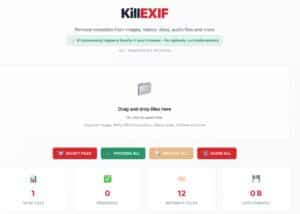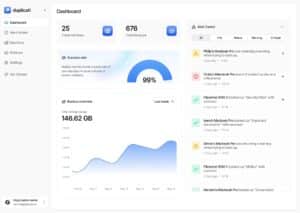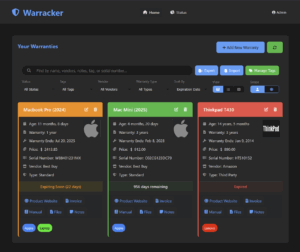The virtualization market isn’t dying; it’s bimodalizing. Since Broadcom closed VMware, perpetuals are gone, bundles are bigger, and partner programs favor large multi-year deals. For most mid-market estates and many MSPs, the most pragmatic answer is to make Proxmox VE the default—not as a “lightweight lab tool,” but as a production platform that can handle multi-tenant isolation, first-class APIs, and serious networked storage. OpenStack and OpenNebula remain excellent choices where you truly need full private-cloud semantics at very large scale, but they’re not the only way to get multi-tenant + API + SDN + shared storage. Proxmox can do this today with less overhead and a clearer 3-year TCO.
Below is a CTO-grade reframing that puts Proxmox front and center—without downplaying OpenStack/OpenNebula where they shine.
Why Proxmox should be your “default yes”—including multi-tenant, APIs, and networked storage
Multi-tenant isolation (without the heavy cloud control plane):
- RBAC & ACLs per user/group/pool: carve the cluster into resource pools (CPU/RAM/disk quotas) and grant fine-grained permissions (create/console/backup/restore) per team, business unit or external tenant.
- Directory integration: AD/LDAP realms out-of-the-box; OIDC/SAML via standard reverse-proxy patterns. 2FA supported.
- Virtual networking isolation with Proxmox SDN: VLAN, VXLAN, and EVPN fabrics; per-VM/per-VNet firewall; security groups; DHCP/DNS helpers. This is tenant-grade isolation for most MSP/SMB use cases.
- Self-service without the bloat: scoped users can deploy templates (Cloud-Init), manage their VMs, trigger backups, view metrics, and open consoles—with full audit trails. Need billing or storefront? Integrations exist (WHMCS/HostBill or custom via API).
APIs & automation:
- REST API is first-class; pvesh CLI mirrors it; mature Terraform provider; Cloud-Init support; battle-tested Ansible roles; event hooks for HA/backup.
- Observability: native metrics, Prometheus exporter, syslog integration, and easy ELK wiring.
- CI/CD-friendly: treat infra as code (Terraform), images as artifacts (Packer), and push declarative changes safely (Ansible).
Networked storage—seriously:
- Hyper-converged Ceph (RBD/FS) integrated and supported; scales linearly with the cluster and serves both block and shared FS semantics.
- External storage: NFS, iSCSI, ZFS over iSCSI, Ceph, SMB/CIFS for templates/ISO; multipath, SR-IOV, and modern NIC offloads.
- Proxmox Backup Server (PBS): deduplicated, encrypted backups; incremental replication; fast restore; remote targets for off-site DR.
HA, upgrades & DR:
- HA with fencing; live migration; rolling updates; replication per VM (ZFS/async schemes) for quick failover; cross-site DR architectures proven in the field.
Security & governance:
- Role-scoped access per pool; API tokens; 2FA; backup encryption; audit logs; hardened templates; SDN firewalls and security groups.
Bottom line: for most multi-tenant MSP/SMB estates (2–20 nodes, sometimes hundreds), Proxmox delivers tenant isolation, APIs, and networked storage with less moving parts and 1/3–1/2 the 3-year TCO versus heavy, bundled stacks.
You still want OpenStack/OpenNebula when you truly need a full cloud control plane (large multi-tenant with strict quotas, multi-region, complex self-service catalogs, or deep ecosystem requirements). But don’t default to them just to tick “multi-tenant + API + storage”: Proxmox already does that for the majority of real-world cases.
Three paths (re-weighted for reality)
1) Stay with VMware (when it’s the right tool)
- When: SAP/Oracle, massive VDI, heavy NSX/vSAN adoption, strict vendor support mandates.
- How to make it work: core/sockets right-sizing; host consolidation; BIOS/firmware tuning; negotiate term/volume; validate RTO/RPO vs. alternatives.
2) Proxmox-first on-prem/private cloud (your pragmatic default)
- When: most mid-market estates; MSP multi-tenant clusters; edge DCs; regulated workloads needing EU residency and predictable costs.
- Why: tenant isolation + APIs + SDN + Ceph + PBS without a heavy control plane; simple support subscription; transparent operations.
3) VMware-as-a-Service in a hyperscaler
- When: fast DC exit, bursty demand without CAPEX, standardize multicloud while keeping VMware semantics.
- Caveats: egress, latency, sovereignty; ensure observability, IAM, KMS, encryption, SG/NSG keep pace.
90-day plan (with Proxmox as the default track)
Days 0–15 — Discovery & risk
Inventory clusters/hosts/VMs; map dependencies (AD/DNS/PKI, backup, monitoring); classify by criticality and RTO/RPO; build a 3-year TCO: VMware vs. Proxmox vs. cloud.
Days 16–45 — PoC that proves tenant/API/storage
Stand up Proxmox + Ceph (2–3 nodes); create resource pools and RBAC for two “tenants”; enable SDN VXLAN/EVPN; migrate 10–20 VMs via V2V; wire PBS; validate p95/p99, storage latency, HA, backup/restore, Terraform/Ansible flows.
Days 46–75 — Transition design
Decide what stays on VMware, what moves to Proxmox, what goes public cloud; draft runbooks, rollback and validation; secure enterprise support with your partner; design DR (Ceph mirrors/off-site backups).
Days 76–90 — Phase 1
Move the first 30–40 % (non-core); enforce IaC, monitoring and cost dashboards; review KPIs; green-light Phase 2 for core if targets hold.
Where Stackscale fits (EU-grade execution)
If you need EU data residency, low latency, and 24×7 support, a managed private-cloud provider can bridge strategy and operations. Stackscale runs:
- Optimized VMware (consolidation, licensing, managed DR).
- Proxmox migrations at scale (V2V factory, managed Ceph, Network Storage, APIs, PBS, 24×7).
- OpenStack/OpenNebula deployments when full cloud semantics are required.
- Mixed estates (Hyper-V/OpenShift) where it’s the best fit.
“We see more mixed topologies: VMware for core, Proxmox for edge/dev-test, OpenStack for true multi-tenant,” says David Carrero (Stackscale – Grupo Aire). “Non-negotiables are a single observability plane and a clear SLA.”
FAQs
Can Proxmox really do multi-tenant safely, or do I need OpenStack/OpenNebula for that?
Proxmox supports multi-tenant isolation via RBAC/ACLs on resource pools, directory integration (AD/LDAP, OIDC via proxy), and Proxmox SDN (VLAN/VXLAN/EVPN) with per-VNet/VM firewalls. For most MSP/SMB scenarios, that’s enough. Choose OpenStack/OpenNebula when you need a full cloud control plane (large multi-tenant, complex quotas/catalogs, multi-region).
What about APIs and automation?
Proxmox exposes a first-class REST API, pvesh CLI, a solid Terraform provider, Cloud-Init, and Ansible roles. You can run end-to-end provisioning (images → templates → networks → storage) as code.
How does Proxmox handle shared/networked storage?
Hyper-converged Ceph (RBD/FS) is natively integrated; external NFS/iSCSI/ZFS-over-iSCSI/Ceph are supported; multipath and SR-IOV where needed. Proxmox Backup Server adds dedupe/encryption, incremental backups, and fast restores for DR.
Where does Proxmox fall short vs. OpenStack/OpenNebula?
At very large multi-tenant scale with deep self-service catalogs, complex quota/accounting/billing, and multi-region topologies, OpenStack/OpenNebula offer a richer cloud control plane. For the vast majority of mid-market estates, Proxmox hits the target with lower TCO and complexity.
Takeaway: If you need multi-tenant, APIs, and network storage without a heavyweight control plane, Proxmox VE is not just viable—it’s the default most teams should try to disprove. OpenStack/OpenNebula remain the right answer when you truly need full cloud semantics at scale. The smart play is to quantify and choose intentionally, not by habit.











